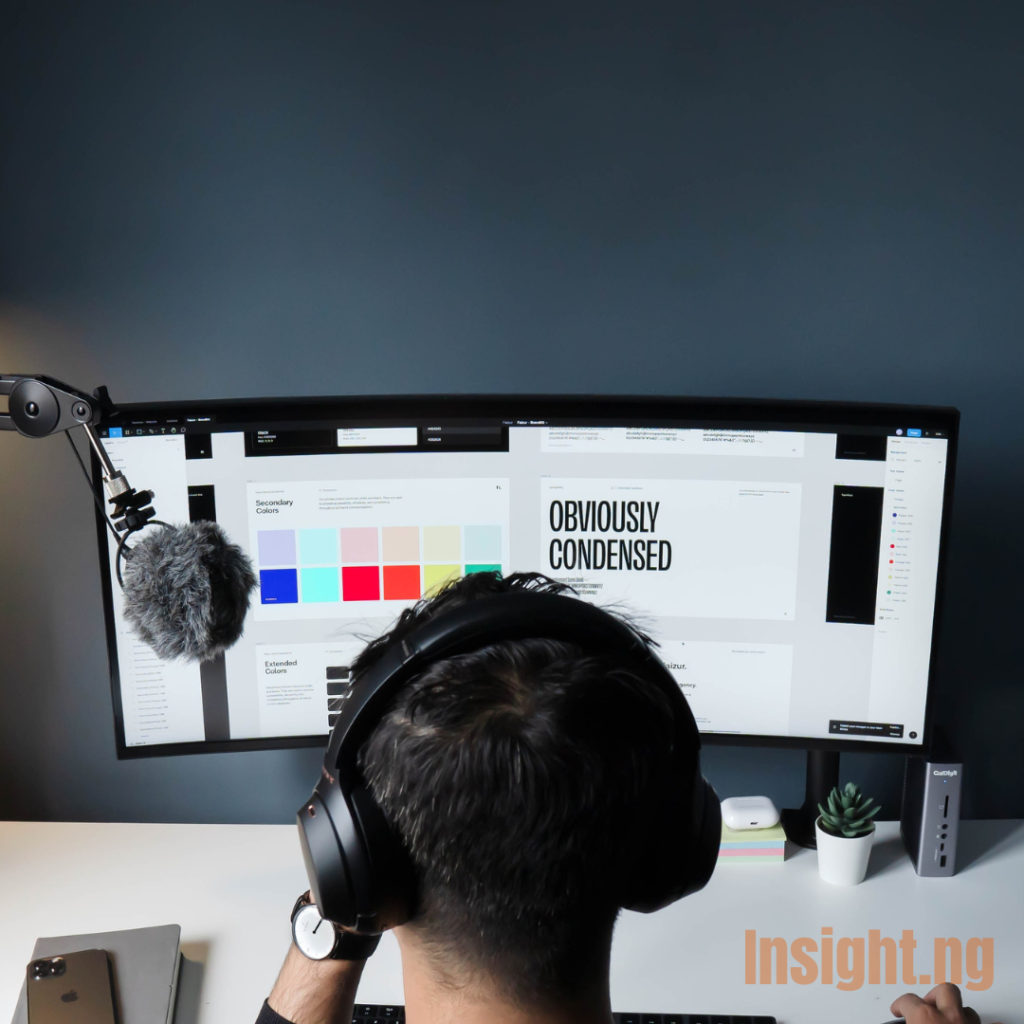Have you ever tried to perform a task on a web page, but the process seems difficult to you? So many things could create a sour experience for you when navigating a difficult website. It might be that the images are not properly aligned, using confusing words for CTA, buttons are hard to find, or the lack of a proper user research by the designer.
Having to deal with a website where the CTAs seem confusing and the website layout seems complicated to understand is frustrating. You wonder if the designer thought about making the interface easy for you before embarking on the design.
That is what happens when a user interface is designed with little to no consideration for the product’s users. As a result, the product becomes difficult to navigate, and no matter how good the functionality is, a bad interface can destroy the essence of the functions.
The beauty of your User Interface (UI) design is how users can relate to and communicate with the design elements on the webpage or digital product. Thus, you must prioritize their needs, aspirations, and motivations to create an interactive and relatable user interface design for your website or product.
User interface design goes beyond combining color, texts, and images. There is a logic behind the design, and it is important that you know the logic. The logic is to understand your user, understand their pain points and convert them into design solutions they can access when interacting with your website.
In this article, I will explain what UI design is, why it is essential, how to learn it, and why your UI design would be a mess without proper user research.
Table of Contents
What is UI (User Interface) design?

User interface design is the visual layout and aesthetic appeal of a product. The main aim of user interface design is to create interface elements on a product that users can easily interact with as they try to solve their needs with the product.
UI design is about designing images, buttons, adding colors, font size, and the general graphical layout of a product. However, the vital point is that the users’ need has to be at the forefront while designing all these. Else, you might end up with an interface with a good visual appeal but difficult to use for your user group.
So, UI design is not first about looks; it is first about designing a solution in the form of an interface. This implies that the user interface designer ought to anticipate user needs, become acquainted with their level of intelligence and combine these results with his UI technical skills to create a usable interface.
Why is user interface design important?
Think about a human body with all the respiratory, circulatory, and other systems intact and functioning correctly, but with no flesh. That’s gross, right? Sorry for being too graphic. But, that’s what a website or product without a user interface looks like. Just as it is impossible to imagine the description above, it is impossible to imagine a product without a user interface. So, how will it exist in the first place?
The user interface design of a product gives interpretation to the functionality of the product. Of course, the product must function properly, but how will you be able to communicate with the features of its functionality if there is no button to click, text to read for better understanding, and images to give a visual representation? You’ll agree with me that the functionality is of no use then!
As UI designers design the interface, the functionality and usability of the product are designed by UX designers.
What is the difference between UI design and UX design?
UX (User experience) design focuses on creating products that offer a great experience to users. This implies that UX design considers all elements of design that can make the design functional and usable for users. So, while UI design is a career on its own, it can still be considered as part of the overall UX design process of a product because the aim is also to offer a great experience to users through interacting with design elements.
UX design is concerned more with logic. It is the framework of the design. UX design is like the skeletal structure and the body’s internal organs; the flesh is useless without the skeleton and internal organs.
So, the user interface is useless without the user experience design. This is where user research becomes important for user interface design. The reason is simple. It is impossible to offer a great experience to users without researching their needs and pain points. User research is the bedrock of creating a good user experience. Thus, it is important to give priority to it before designing the product.
What is User Research?

User research involves conducting interviews and surveys on prospective users of a product to understand their feelings, pain points, aspirations, and motivations. User research is necessary because it guides the designer on how and what to design. As a creative, the designer can develop multiple ideas on how a product should be and the features to design, but that will be a major error if the user’s needs are not considered.
Since the product is for the users, it makes sense that due diligence is carried out to “know where the shoe pains them” and develop a solution based on that pain. You must remember that designing a product is not about displaying design expertise but about empathizing with a set of people and creating a solution born out of empathy for them.
4 Reasons UI Design will Fail without User Research
User research is the foundation of any design that will offer a positive user experience for users. In addition, user research helps designers form a strategy that will be used as their solution template and their user persona to help them stay focused on the peculiarities of their users.
Without solid user research, the user interface design will not have any information about users to fall on, and it could be a disaster for several reasons.
-
There won’t be a solid understanding of why you need to design certain interface elements
You can only know the reason for your design when you have deeply empathized with your user’s needs. A poor understanding of user needs will affect how you design the interface. For example, suppose you don’t know that most of your user group are people in their 80s who might have eyes issue. In that case, you might never pay attention to the background color you use for your interface, which could defeat the whole purpose of the design; as such, your user interface will fail the user experience test woefully.
-
You will not know how users perform their tasks
Apart from understanding why you need to design features in a certain way, you might not know the extent of the ease of use to deploy in the design. User research tells you how users perform their tasks and how you can create a simple process here.
-
Absence of user research makes you ignorant of the features to prioritize
User research helps you determine the most important features to users. For example, these features should have a consistent design style and appealing font, but you might not even know they are essential to your users if you have not conducted thorough user research.
Read also: Insight on the Top 10 Most Lucrative Careers in Tech
-
Your designs will not address your users’ pain-points
Designs are meant to proffer solutions. But how can you proffer solutions when unaware of the problem? Ignoring user research or conducting poor user research will only corrupt the usefulness of your design and, ultimately, the usability (how easy it is to use). You will end up designing without the users’ problem in view, and you won’t be solving any problem, since you are not aware of the problem in the first place. Thus, the purpose of the design is lost.
Avoid missing out on the latest posts from Insight.ng, subscribe to our Newsletter for instant notifications.
How to strengthen your user interface design with user research
You can create a useful user interface when you understand your users’ pain points. So how do you use their pain points to create an interface that brings solutions?
-
Represent each pain point with a design feature
During your user research, as you listen to the proposed users’ predicaments, represent each pain point with either a feature or a button with CTA that can solve their problems. For example, if the problem is “there is difficulty in getting a car hire service in this town or state.” You can represent that with a button that says, “Hire a car service.” Or “Connect with a car hiring service.” This already gives you an idea of the problem the button will solve.
-
Use images and icons that users can recognize
Another way to make your user interface design relatable is to tell users to identify some images and icons during your user research and see the icons they can relate to; mark those icons like the ones you will use for the design. Don’t use unfamiliar images and icons
-
Conduct usability testing as part of your research process
Usability testing is testing a prototype of your design with a representative user group to see how well they can interact with it without much explanation. This usability test will help you know areas to improve in your design depending on the feedback you get from your users.
Read also: A Beginner’s Guide to Design Thinking: The Design Thinking Process
Is UI design hard to learn?
With all that has been said, you wonder, “Is UI design hard to learn?” Well, the answer to that question is relative. It is dependent on you. UI design is not hard to learn, but your attitude to it determines if it will be easy or hard.
All you need to do is go online, check for tutorials on UI design, and learn the tools used for UI design like Figma, Adobe XD, Figjam, etc.
Final thoughts
The user interface links the functionality and users’ relationship with a product. If the link is broken, it becomes difficult for users to access the functions of the product. Thus, solid user research must be conducted to know how users can relate well to design elements so that you can design an element that gives them utmost satisfaction.
Are you looking to start a career in UI design you need a community of like-minds where you can interact and grow together? Insight.ng Community is a great platform just for you. Click this link to join us today.
Or you can subscribe to our Newsletter for more informative content like this.
About Author
-
Henry is an SEO Content Writer and Technical writer. He adopts a balanced method of content research and SEO Best practices to create user centric content that rank on Google SERP.
Henry is Hubspot certified, and you can always count on his knowledge on content creation.
Latest entries
 TechnologyFebruary 6, 2023Quick Ways to Track a Missing iPhone in Nigeria
TechnologyFebruary 6, 2023Quick Ways to Track a Missing iPhone in Nigeria TechnologyJanuary 8, 2023How to Become a Front-end Developer in Nigeria
TechnologyJanuary 8, 2023How to Become a Front-end Developer in Nigeria TechnologySeptember 28, 2022Five Pro Tips For B2B Technology Marketing
TechnologySeptember 28, 2022Five Pro Tips For B2B Technology Marketing TechnologySeptember 13, 2022The Future of Software Development in Nigeria
TechnologySeptember 13, 2022The Future of Software Development in Nigeria

